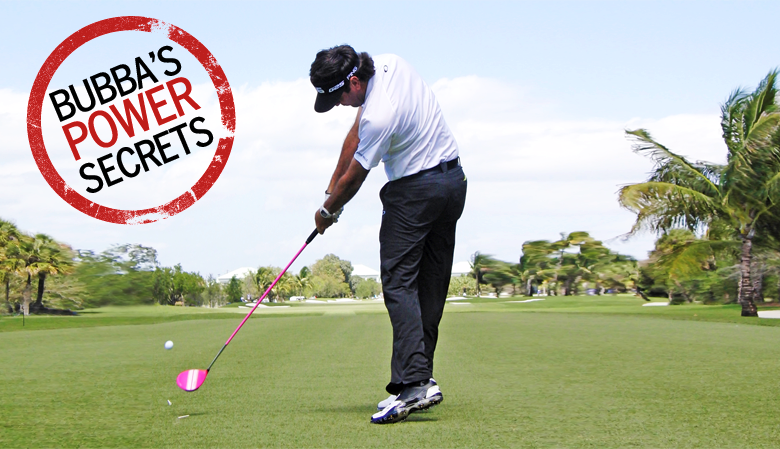Bubba Watson’s power secrets
Last updated:
|
Since he joined the PGA Tour in 2006, Bubba Watson has ranked 1st in average driving distance five times and 2nd a further three. He led this category in 2014 with an incredible 314.3 yards. The two-time Masters champion’s swing is often described as unorthodox, but this isn’t strictly true. More accurately, the extreme force he applies to the ball makes him appear unconventional. Indeed, the positions he moves through as he delivers the club show up time and again in the techniques of professional long drivers. Lee Cox, who coached 2010 World Long Drive champion Joe Miller, has identified more than 40 moves that help professional long drivers smash it more than 400 yards, and set them apart from regular tour pros. Here, he reveals five that are present in Bubba’s swing, and explains how they could get you hitting it further. |
1. High hands and lifted foot at the top |
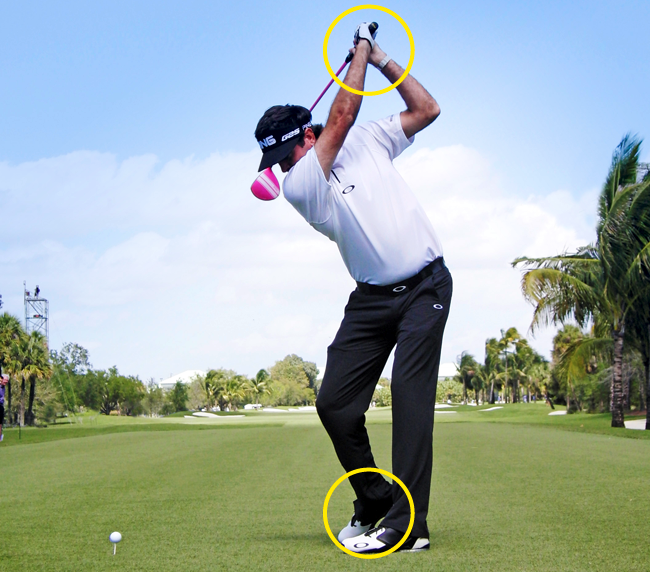 |
|
All professional long drivers have a high hand position and a lifted front foot at the top of the backswing and Bubba exhibits this position too. This enables him to produce extra clubhead speed in the downswing in two ways. The high hands mean they drop further than if the swing was flatter so he’s able to increase his arm speed and stamping the front foot into the ground enables him to rotate his body even faster. Arm speed and rotational speed are the magic ingredients for distance. |
2. Arms moving back as body starts transition |
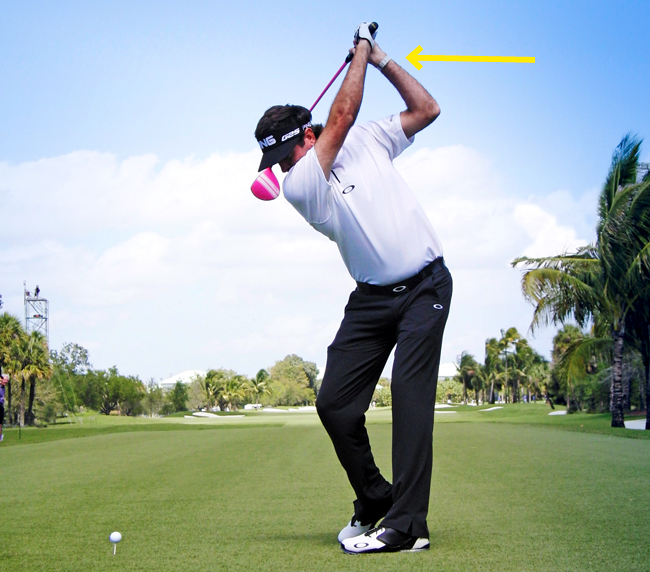 |
|
If you look at Bubba’s swing in slow motion his arms are still going back and moving into position at the top of his backswing as his body has already started to move forward into the downswing. It’s the same way the body moves when you try to throw a ball as far as you can. This enables Bubba to add speed to his right shoulder and arm so he can generate even greater clubhead speed in the downswing. |
3. Foot movement throughout the swing |
 |
|
Most coaches tell you to keep your feet still but Bubba and all professional long drivers have lots of movement. Bubba’s feet are actually both off the ground at impact when he really goes for it. This is common in professional long drivers but Bubba is the only tour pro doing it. This shows how well he has used the vertical ground compression in the downswing (see point 4) and the feet swivel after impact to help release all the power he created without injuring himself. |
4. Spine compress and using vertical ground force |
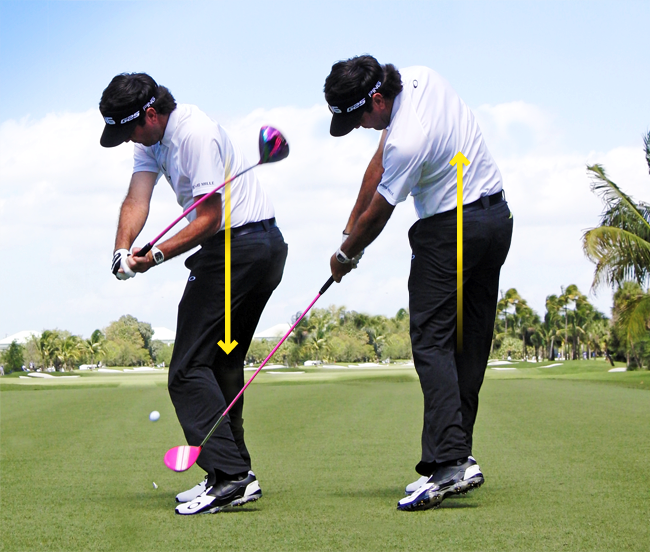 |
|
All golfers can gain extra distance by using the ground more effectively. As Bubba begins his transition by moving his left arm and front foot down, he compresses his spine into the ground so he gets a bit lower. He then uses vertical ground force to push off from the floor. This changes the direction of the club’s grip from moving down in the downswing to sharply upwards into impact, which creates up to 10mph extra clubhead speed. |
5. Staying behind the rotational axis |
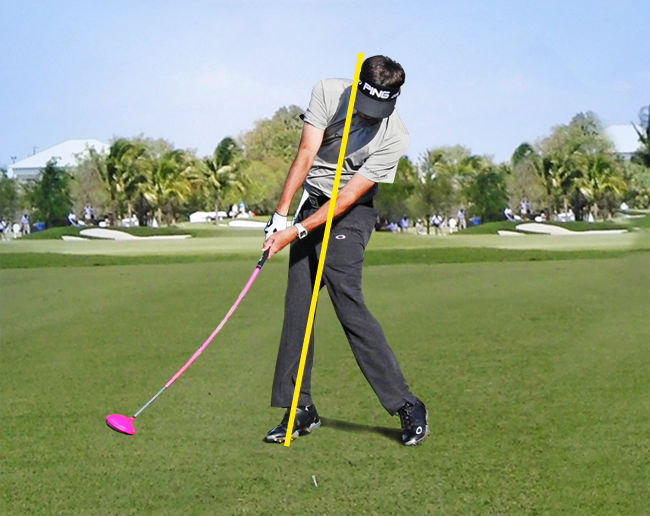 |
|
The rotational axis in a golf swing is a straight line from the big toe of your front foot up through your nose at address. The majority of all great long drivers stay behind that line for the entire swing. This works because you’re hitting the ball off a tee – you couldn’t swing like this for a ball off the floor. The more you stay behind this axis line the faster you can rotate your body and swing the club. Surprisingly, a lot of long drivers still have 50 per cent of their weight on the back foot at impact – not the 80-20 split to the front foot we often hear about – because they’ve stayed behind the rotational axis. |
